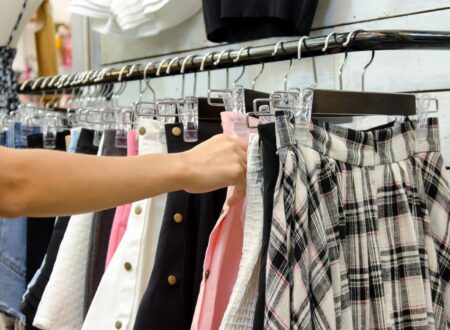Introduction to Sustainable Fashion
Fashion is often seen as a way to express individuality and creativity. Yet, behind the glamorous facade of runway shows and trendy boutiques lies a darker reality—one driven by waste, pollution, and unethical practices. As consumers become more aware of these issues, the demand for sustainable fashion is growing rapidly.
Sustainable fashion isn’t just a trend; it’s a movement towards conscious consumerism that prioritizes both style and the planet. It invites us to rethink our shopping habits and make choices that reflect our values. With eco-friendly options on the rise, there’s never been a better time to embrace this shift in how we view clothing.
Join us as we explore what sustainable fashion truly means, its impact on our environment, and practical steps you can take toward building an ethical wardrobe that doesn’t compromise your sense of style. The journey into sustainable living starts here!
The Environmental Impact of Fast Fashion
Fast fashion has become a significant threat to our environment. The industry thrives on rapid production cycles, which leads to excessive waste. Millions of tons of clothing end up in landfills each year.
The materials used in fast fashion are often synthetic and non-biodegradable. These fabrics can take centuries to decompose, contributing to pollution and harming ecosystems.
Water is another casualty of this trend. From the dyeing process to garment washing, vast amounts of water are consumed, leaving rivers polluted and communities without clean sources.
Moreover, the carbon footprint associated with mass production is staggering. Transportation emissions further exacerbate climate change issues while contributing little joy or satisfaction for consumers.
As awareness grows about these environmental impacts, many individuals seek alternatives that prioritize sustainability over fleeting trends.
What is Sustainable Fashion?
Sustainable fashion embodies a movement towards eco-conscious clothing choices. It prioritizes environmental health and social responsibility over fast trends.
At its core, sustainable fashion seeks to minimize waste and pollution. This includes using renewable resources, reducing carbon footprints, and conserving water in production processes.
Additionally, it champions the fair treatment of workers throughout the supply chain. Ethical labor practices ensure that everyone involved receives equitable wages and safe working conditions.
Sustainable fashion also emphasizes timeless designs over fleeting styles. By investing in quality pieces that last longer, consumers can reduce their overall consumption.
This approach encourages mindful purchasing habits. When we choose thoughtfully crafted garments over mass-produced items, we become part of a larger solution for our planet’s future.
Eco-Friendly Fabrics and Materials
Eco-friendly fabrics are revolutionizing the fashion industry. Brands are increasingly turning to materials that minimize environmental impact.
Organic cotton, grown without harmful pesticides, is a popular choice. It’s soft and breathable, making it perfect for everyday wear.
Bamboo fabric is another sustainable option. This fast-growing plant requires minimal water and no chemicals during processing. Plus, it has natural antibacterial properties.
Recycled materials like polyester made from plastic bottles also stand out. By repurposing waste, these fabrics help reduce landfill contributions while creating stylish clothing options.
Hemp is gaining traction too. Its durability and low resource needs make it an excellent alternative to conventional fibers.
Linen offers a timeless aesthetic with sustainability roots as well; derived from flax plants, it’s biodegradable and uses less water in cultivation compared to cotton.
Every material choice counts in promoting eco-consciousness within the fashion world.
Ethical Production and Fair Trade Practices
Ethical production is at the heart of sustainable fashion. It focuses on ensuring fair wages, safe working conditions, and respect for workers’ rights throughout the supply chain. When brands prioritize these values, they create a positive impact on communities.
Fair trade practices play a crucial role in this movement. They guarantee that artisans and laborers receive just compensation for their hard work. This approach empowers individuals and fosters economic growth in underserved areas.
Choosing to support brands committed to ethical production means more than buying clothes; it’s about endorsing social justice. Consumers have the power to influence change by selecting garments made with integrity.
As awareness grows, more companies are adopting transparent practices. Shoppers can now seek out labels that promote sustainability while supporting ethical initiatives worldwide. Each purchase becomes an opportunity to drive meaningful progress forward in the fashion industry.
How to Incorporate Sustainable Fashion into Your Wardrobe
Start by assessing your current wardrobe. Identify pieces you wear frequently and those that rarely see the light of day. Consider donating or recycling items that no longer serve you.
Next, focus on quality over quantity. Invest in timeless staples made from eco-friendly materials. Look for brands committed to sustainable practices.
Don’t shy away from thrifting. Vintage shops can be treasure troves filled with unique finds while reducing waste and promoting circular fashion.
Mix and match your existing clothing to create fresh outfits instead of buying new ones constantly. This not only saves money but also sparks creativity in styling.
Educate yourself about seasonal trends versus timeless styles. Prioritize versatile pieces that fit seamlessly into various looks throughout the year, making sustainability a natural part of your daily life.
Brands and Retailers Making a Difference
Several brands are stepping up to redefine fashion with sustainability at their core. Companies like Patagonia advocate for the environment, using recycled materials and promoting repair over replacement.
Everlane focuses on transparency in its supply chain. They disclose costs and ensure fair wages for workers, making ethical shopping accessible.
Reformation is another standout brand that prioritizes eco-friendly practices. With a commitment to carbon neutrality and low-waste production, they cater to style-conscious consumers who care about the planet.
Then there’s Eileen Fisher, known for timeless designs made from organic fibers. Their take-back program encourages customers to return worn items for recycling or resale.
These retailers show that sustainable fashion can be chic and responsible simultaneously. By choosing these brands, you support initiatives aimed at creating a healthier planet while still expressing your unique style through clothing choices.
Small Changes, Big Impact: Tips for Becoming a Conscious Consumer
Every small step counts when it comes to sustainable fashion. Start by evaluating your closet. Are there items you rarely wear? Consider donating or swapping them with friends.
Next, think about quality over quantity. Investing in a few high-quality pieces will reduce the need for frequent replacements. Look for timeless styles that won’t go out of fashion quickly.
When shopping, seek brands committed to sustainability and ethical practices. Research their materials and production processes before making a purchase.
Don’t forget the power of second-hand shopping! Thrift stores and online platforms offer unique finds while extending the life cycle of clothing.
Educate yourself on eco-friendly laundry habits. Washing clothes in cooler water and air-drying can significantly decrease environmental impact while prolonging garment life. Small changes can create ripples of positive change across the fashion industry.
The Future of Sustainable Fashion
As we look ahead, the landscape of sustainable fashion is evolving rapidly. Innovations in technology are paving new paths for eco-friendly practices. From 3D printing to advanced recycling methods, brands are exploring ways to minimize waste and maximize efficiency.
Consumer awareness is also on the rise. Shoppers increasingly demand transparency about sourcing and production processes. This shift encourages companies to adopt ethical standards that prioritize both people and the planet.
Collaboration among stakeholders will be crucial in shaping this future. Designers, manufacturers, and consumers must work together to create a more resilient industry.
The integration of circular economy principles holds promise too. By reimagining how we produce and consume clothing, second-hand markets could thrive alongside emerging brands focused on sustainability.
With these trends taking root, sustainable fashion has the potential not just to survive but to flourish in an ever-changing world.
Conclusion
Sustainable fashion is more than just a trend; it’s a movement towards a better future. As consumers, we have the power to make choices that reflect our values and promote environmental and social responsibility. By understanding the impact of fast fashion and embracing sustainable practices, we can contribute to positive change.
The shift towards eco-friendly materials and ethical production methods is gaining momentum. Many brands are committed to making a difference, proving that style doesn’t have to come at the expense of the planet or its people.
Incorporating sustainable fashion into your wardrobe starts with small steps—choosing quality over quantity, supporting responsible brands, and being mindful of your purchases. Every decision counts in creating a more sustainable industry.
As we look ahead, it’s clear that conscious consumerism will play an essential role in shaping the future of fashion. Together, we can foster an environment where sustainability thrives alongside creativity and innovation. Embrace this journey not only for yourself but for generations to come—fashion should be beautiful inside and out.





